by: Eli Ungar-Sargon
The smartphone market has become a very competitive place over the last year. With new app phones being delivered by HTC and Motorola on a monthly basis, Apple’s vaunted iPhone is finally facing some real competition. Unlike previous would-be iPhone killers, superphones like the Droid X and the EVO 4G are running mature versions of Google’s Android operating system. The impending release of Froyo, the most recent version of Android, will only make the case more emphatically that there are finally some serious alternatives to the iPhone. It is against this backdrop that Apple has released the iPhone 4 with its revamped operating system, iOS 4. While early speculation suggested that this iPhone might signal the end of Apple’s exclusive relationship with AT&T, Apple has, for the time being, decided to maintain their exclusivity with the wireless carrier in the U.S. And despite the increasingly competitive landscape, Apple seems to be selling iPhone 4’s faster than they can make them. Is all the hype justified? Will the iPhone 4 put Apple back on top of the smartphone market?
Hardware:
The iPhone 4 is the most radical redesign to hit the iPhone line since its debut back in 2007. While both the iPhone 3G and 3GS had rounded, plastic backs, the iPhone 4 is now more edgy with nary a piece of plastic in sight. This makes it a much more attractive device, but it is not as comfortable to hold in the hand.
The iPhone 4’s screen is a sight to behold. While no larger than the iPhone screens of yesteryear, its resolution has quadrupled to 960X640 with a whopping 326 pixels per inch. Putting aside the controversy over whether Apple’s term “Retina Display” is marketing hype or scientific description, this screen is in a class of its own. Unlike some of its competitors, Apple has steered away from both larger screen sizes and AMOLED-based display technologies. Instead, they have chosen to keep their screen at 3.5’’ and push the bleeding edge of LCD technology. It’s hard to argue with the wisdom of this decision. When you lay eyes on a Retina Display, the icons and text are so crisp that it feels like you’re looking at some exotic backlit ink.
Perhaps the boldest part of this iPhone redesign is the relocation of its antennae. Instead of hiding them in the back of the phone, as they did in all three previous versions, Apple has built the new antennae into a steel band that wraps around the outside and is sandwiched between two flat panels of glass that serve as the front and back. A hole just to the left of the receiver reveals a new front-facing 640×480 camera. On the back panel, the improved 5 megapixel camera sits right next to an LED flash that does double duty as a video light. On the inside, the iPhone 4 boasts an A4 processor, from the same family of in-house, speedy chips that run the iPad, 512 MB of RAM, and an all new gyroscope, which provides precise spatial awareness for sophisticated motion-based applications.
Making Calls:
It’s now a running joke: The iPhone is a great phone unless you want to make a call. Much of the anger over this issue has been directed at AT&T, the only network that sells the iPhone in the United States. But it’s very difficult to know how much of the problem is due to AT&T’s network and how much is due to the design of the iPhone itself. So how does the new iPhone 4 with its external antennae fair in the reception and dropped calls department? Noticeably better. In my informal and highly unscientific testing, I have seen better reception and more reliable call quality everywhere I’ve been in the Chicagoland area. Moreover, early adopters in both NYC and the Bay Area, AT&T’s two weakest zones, have been reporting similar performance boosts. Apple has also improved the call quality in the iPhone 4 by building a better receiver and, taking a cue from Google’s Nexus One, including a noise canceling mic. This makes the voices on both ends sound fuller and more present than they did on previous iPhone iterations.
The one caveat about all of these improvements is that there seems to be a design flaw in the antennae band. As it turns out, if you hold the phone in your left hand in the most natural way possible, your thenar eminence creates a bridge between two of the antennae and kills reception. There are a number of simple solutions to this issue, including putting the iPhone in a case, or, as Steve Jobs so cavalierly suggested in an email to a concerned early adopter, holding it differently. But for a device that is so precisely calibrated, this uncharacteristic flaw in its design anthropology stands out like a sore thumb. Overall, though, the iPhone 4 is a huge step forward when it comes to reception and reliability and it is a significantly better phone than both the 3G and 3GS. Still, the really exciting innovation here comes from a new technology that bypasses the AT&T network entirely.
Face Time
Face Time is a video conferencing app that Apple baked into the iPhone 4’s Phone application. As of this writing, it only works when both caller and receiver are using iPhone 4’s connected to Wifi. A Face Time call can either be initiated over the wireless carrier’s network, or directly through the contacts, but either way, once the invitation is accepted, the call is conducted over Wifi. After a few seconds, both phones activate their forward facing cameras and the call begins. In my tests, the video streamed flawlessly and I was surprised at how much better the audio quality was than an ordinary cell call. I was also delighted to discover that with a single tap you can toggle between the forward and back facing cameras, making it easy to show your Face Time partner something that’s in front of you. Face Time is the best, easiest to use implementation of video conferencing that I have ever used. It’s a teasing glimpse into the future of mobile communication and the feeling you get when you use it, the why-isn’t-Skype-this-easy feeling, is pure Apple. The cherry on top is that they’ve released the technology as a set of open standards for any enterprising developer to implement. This means that we may some day see Face Time calls between iPhones and Androids. Next up, world peace.
Web Surfing
If I had to choose one application that defines the iPhone experience, it would be Mobile Safari. Three years and hundreds of apps later, I still find myself in the iPhone’s browser more than any other app. The improvements to Mobile Safari in iOS 4 are subtle. Bing has been added to the list of search engines that can be used and the app now fills in URL’s and makes suggestions while you type in the search field. These may seem like minor changes, but when you look at web browsing on an EVO 4G, or any of the Droid phones, you realize just how much work Apple put into getting this experience right from the beginning.The essential user interface element in interacting with an undersized browser is pinch-to-zoom and this gesture on the original iPhone still beats the pants off of anything the competition has to offer three years later. Perhaps the most noticeable improvement here comes in the form of data speeds. When on Wifi, the iPhone 4 is able to take advantage of the much faster and increasingly prevalent 802.11n Wifi standard. When on 3G, the iPhone 4 uses AT&T’s fast HSDPA data protocol as well as the brand new HSUPA for much better upload speeds. Browsing on Mobile Safari is a speedy experience and Apple’s incremental improvements to the UI are its way of saying: “We got this right the first time.” They did and the added processing muscle and faster data speeds in the iPhone 4 keeps Mobile Safari well ahead of the pack.
Email and the Virtual Keyboard:
People are very particular about email, but I’ve always had a fine time with Apple’s paradigm for this essential function. Seeing as the largest group to switch to the iPhone this year comes from RIM, some of the new features in iOS 4’s Mail app, like the unified inbox and threaded conversations, along with a whole host of improved enterprise features, should make these people feel better about their decision to go iPhone. What might throw a soon to be ex-Blackberry user off is the touch-screen keyboard. I tell people who are contemplating a move to the iPhone to give themselves two weeks to get used to the virtual keyboard. On the iPhone 4, the responsiveness of the on-screen keyboard is back to the level that it was on the original iPhone. This is a good thing, because it had become a little bit laggy on my iPhone 3G and if you’re trying to sell people on using a virtual keyboard, it needs to respond as reliably as a physical keyboard would.
The advantages of touch-screen keyboards, once the initial learning curve is overcome, are numerous. For example, I do a lot of freelance work in translation and the ability to switch the virtual keyboard from English to Hebrew with the tap of an icon has made the iPhone an indispensable tool in my work. Other advantages include the ability to utilize context-specific keys. For example, when you are entering a URL into Mobile Safari, there is a “.com” button on the virtual keyboard. Apple’s on-screen keyboard is the best implementation of a touch-screen keyboard in existence, but as good as it is and as much muscle memory as I’ve developed with it over the last three years, I still must admit to a pang of jealousy over Google’s voice-to-text input option. Perhaps Apple’s recent acquisition of Siri means that they will be implementing a similar feature soon.
Multimedia:
The iPhone has always been an impressive multimedia player, but Apple seems to be resting on its laurels with the iPod app in iOS 4. There are some minor tweaks, including greater control over the creation of on-the-go playlists and a more attractive, iPad-like interface for displaying albums in portrait orientation, but the app is by and large unchanged from previous versions. I’m tempted to posit that this lack of user interface and feature innovation is due to Apple’s dominant position in the mp3 player market and the fact that they simply don’t feel any pressure to innovate in this space anymore. None of this is to suggest that the iPhone 4 is a poor multimedia device. A quick look at the media players available for Android devices will cure you of such notions in a hurry. I just wish the iPhone had wireless syncing and a more robust podcast management system. These features are long overdue.
Audio Playback
To test audio playback on the iPhone 4, I listened to both music and spoken word first through the speaker and through headphones. When I listened to the Brandenburg Concerto No. 3 through the speaker, the iPhone 4 was a little bit weaker than the iPhone 3G, but provided much more detail in the mid and high ranges. Listening to Christopher Hitchens read his superb “Hitch 22” in Audible’s enhanced format, the iPhone 4’s speaker came across as a little more tinny than the iPhone 3G’s. However, when I plugged in my reference-quality Hf2 headphones the new iPhone outperformed the 3G in every way. Music as well as spoken word was fuller and more detailed across the sound spectrum. Another welcome improvement in iPhone 4 is the way that the device handles volume control. Instead of the rocker that previous models used, the iPhone 4 has discrete “+” and “-” buttons on the side that yield a finer granularity of control over the volume increments.
Video Playback
The iPhone 4 is the first iPhone to allow HD content playback.To test video playback, I rented the iTunes HD version of Glengarry Glen Ross. Mamet’s masterpiece was razor sharp on the Retina Display with deep blacks, excellent color reproduction, and wide viewing angles. Having said that, I still don’t see myself watching anything more than a 10 minute YouTube video on this screen. It’s just too small for sitting back and watching feature-length content. And I’m okay with that. This is an always-with-you device that needs to comfortably fit in a trouser pocket. And while I think that the EVO 4G and the Droid X do offer a better video experience than the iPhone 4, I also think that they’re just too big to be comfortable as phones. What both of those phones do have that the iPhone 4 is sorely missing, however, is some way of feeding HD content directly to an HDTV.
Performance and Battery Life:
The iPhone 4 is very responsive. I upgraded to it from the iPhone 3G and the performance boost was instantly tangible. Having said that, the difference between the iPhone 3GS and the iPhone 4 is not quite as dramatic. To get a sense of the performance differences between these three phones, I put together a little experiment. In the video below, you will see the iPhone 3G, the iPhone 3GS, and the iPhone 4 all starting up the resource-intensive and completely addictive, Plants vs. Zombies. All three phones were restarted just before the camera started rolling so as to prevent any confounding variables from influencing the results. The finish line in this race is the appearance of the “tap to start” text at the bottom of the screen. The quicker it displays, the faster the phone.
In addition to the raw increase in computing power another thing that really makes the phone feel fast is iOS 4’s new multitasking capabilities. Simply double tap on the Home button and a drawer appears at the bottom of the screen with all of the apps that were recently opened. Instead of having to go back to the home screen every time you want to launch an app, you can now just access this drawer and move seamlessly from one app to the next.
The milage that you get out of the iPhone 4’s battery will vary depending on what you are doing with it. Apple claims 40% better battery life than the iPhone 3GS and most reports seem to bear this estimate out. Personally, I found that on a heavy day of use, which included non-stop web surfing and email, an hour of phone calls, 30 texts, two Face Time conversations, 10 minutes of video recording, 20 photos, and 15 minutes of gaming, I got a little more than 14 hours of battery life. On a lighter day of use, it was closer to 20 hours. This is twice and thrice the amount of battery life that I got out of my iPhone 3G and even with heavier use I feel confident in saying that the iPhone 4 will make it through a full day of work with a little left over in the tank. If you do find that you’re out of juice, the iPhone 4 is very quick to recharge. In my test, it went from dead to full in 2 hours and 20 minutes. The only criticism that I have when it comes to the iPhone 4’s performance is that it gets hotter with normal use than any previous iPhone.
Camera
Before I convey what I’ve learned about the iPhone 4’s camera over the past week, I’d like to start with a disclaimer. The iPhone 4 is not a real camera. Despite the enthusiastic and over-the-top reaction of some early reviewers, the laws of optics did not change with the release of Apple’s latest smartphone. This is a “camera” in the way that Keanu Reeves is an “actor.” That is to say, sort of. For the past week, I’ve been testing the iPhone 4’s photo and video capabilities. For still photography, I pitted it against the Canon SD 870 IS, a two year old 8.0 megapixel point-and-shoot and my trusty Canon 5D with a 28mm prime lens. For video, I used the Flip Mino HD and my beloved Sony EX1 as points of reference. Here is what I learned:
Still Photography
The first thing you notice about the camera app on the iPhone 4 is how snappy it is. There’s virtually no shutter lag and I would go so far as to say that it’s quicker than any point-and-shoot I’ve ever used. In addition, the stunning Retina Display provides an excellent live viewfinder. Apple has shown an enormous amount of taste and basic photographic IQ here by choosing to avoid the megapixel wars. Instead of going for 8 or 10 megapixels, which would surely have looked better in side-by-side comparison charts, they chose a modest 5 megapixel camera, and in so doing, they were able to keep the sensor pixels large enough to make the system perform in low light. Apple should also be commended for squeezing every bit of quality that is physically possible out of this tiny imager. Having said that, when it comes to actually producing images, the iPhone 4 is not playing in the same league as even an entry-level point-and-shoot camera. The digital zoom is terrible and should be ignored with extreme prejudice. The iPhone’s LED flash tends to ruin more pictures than it saves and it is often better to manually disable it and let the photons fall where they may. Below are a series of images of different subjects in different lighting conditions that show how the iPhone 4 fares against real cameras. Notice that when the light is right, the iPhone can produce decent images, but if there’s either too much light, or too little, the camera kind of freaks out.
For full resolution files of the photos, click here.
Video Recording
Video recording is the biggest disappointment of the iPhone 4. Quite frankly, it records the worst HD video I have ever seen.The camera can’t handle mixed lighting situations and it has a horrible tendency of blowing out anything that remotely resembles a highlight. The sound is also terrible for anything but the closest subjects. It’s almost meaningless to say this, because they’re both terrible video cameras, but the iPhone 4 is not quite as good as the Flip. It’s difficult to make this judgement as it’s like trying to distinguish between different kinds of ugly, but in the final assessment, the Flip is a more forgiving camera. Although the iPhone has some things going for it, like better low light performance and color representation, it just doesn’t handle real life point-and-shoot video as well as the Flip. Below are a series of videos in different settings showing how the iPhone 4 performs against the Flip and the Sony EX1.
The potential of the iPhone 4 for citizen journalism is exciting and the release of iMovie, a $5 app that allows you to do simple video editing on the phone, means that more people will be able to produce better video about the subjects that matter to them. I wouldn’t be surprised, for example if the iPhone 4 started to play an important role in documenting human rights abuses around the world. And for that kind of footage, just being available and ready to shoot is all it takes. But it is important to point out the deficiencies of the iPhone 4’s camera, because the iPhone is a convergence device. It is true that if you have an iPhone, you don’t need an mp3 player, because the iPhone obviates the need for such a device. The same can be said for a GPS unit. If you have an iPhone and you download one of the myriad GPS apps on the App store, you don’t need to also buy a GPS. But this is not true of either a digital still camera, or a camcorder. The improvements that Apple has made to the camera are impressive, but it would not be true to say that having an iPhone 4 obviates the need of having either a point-and-shoot, or a camcorder. It’s just not good enough.
Final Thoughts
Before the iPhone 4 was officially announced, I found myself in a very interesting position. I had recently acquired the iPad Wifi and I was at the end of my two-year contract with AT&T. I looked at the new generation of Android devices and I was tempted. I could, it seemed, buy an Android smartphone and tether my iPad to its internet connection. I would then have both a phone that didn’t drop calls and all the benefits of the ultimate iOS device. It made sense until I really started to pay attention to all of the little things that I had come to take for granted on the iPhone. It’s not that the iPhone is perfect and as I’ve mentioned throughout this review, there are elements of Android that Apple can and should learn from. But when you look at the gestalt of the thing, the iPhone experience is still unmatched. From the consistency and polish of the user interface to the fact that you can count on significant updates making their way on to your phone in a timely and predictable fashion, the iPhone provides a superlative mobile computing experience.
By improving the iPhone’s capabilities as a phone, Apple has also responded to the number one complaint that people had with the previous models. In spite of the somewhat disturbing antenna debacle, the iPhone 4 is much better at making and receiving calls than its older siblings. And there has never been a better time to join the party. AT&T recently dropped their $30 one-size-fits-all unlimited data plan in favor of two new plans. The first is a $15 per month plan that gives you 200 MB of data and the second is a $25 per month plan that has a data cap of 2 GB. The upshot of this change is that you can now buy an iPhone and pay as little as $55 per month for the service. That’s $15 less per month, or $360 less over the course of a 2 year contract than was previously possible. So not only is the iPhone 4 itself cost-competitive with the best Android devices out there, but the entry-level cost of ownership is also significantly lower. If you’ve been holding out, this is an excellent time to buy. If you do decide to buy the iPhone 4, do yourself a favor and buy one of Apple’s Bumper cases for it. Not only will it eliminate any of the aforementioned antenna issues, but it will also give the phone a better feel in the hand.
With the iPhone 4, Apple has once again succeeded in setting the gold standard for smartphones, but the market is red-hot and the competition from Google, HTC, and Motorolla is coming on strong. This space will be very interesting to watch over the next year. And that’s a good thing, because in the end, you and I are the beneficiaries of the Mobile Wars.
My special thanks to Pennie Ungar-Sargon, Eli Vaknin, and Amanda Newman for their help in putting together the supporting materials for this review.



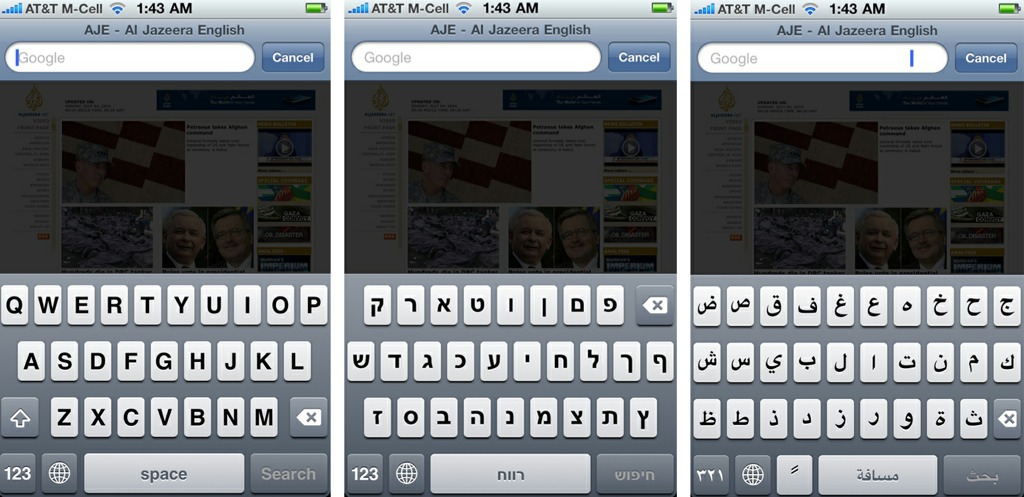
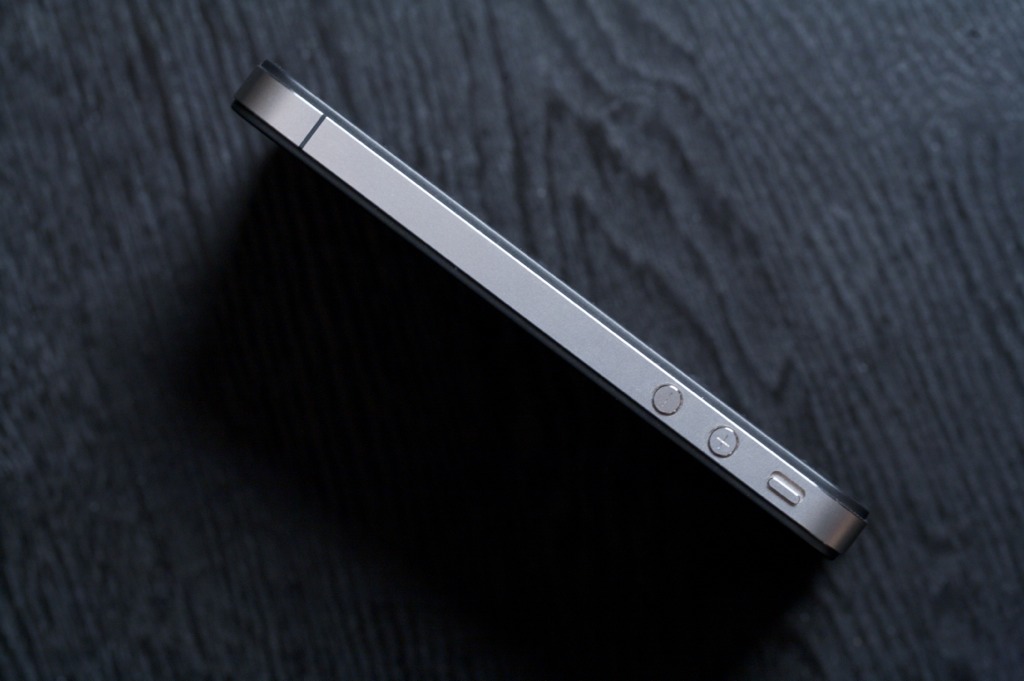

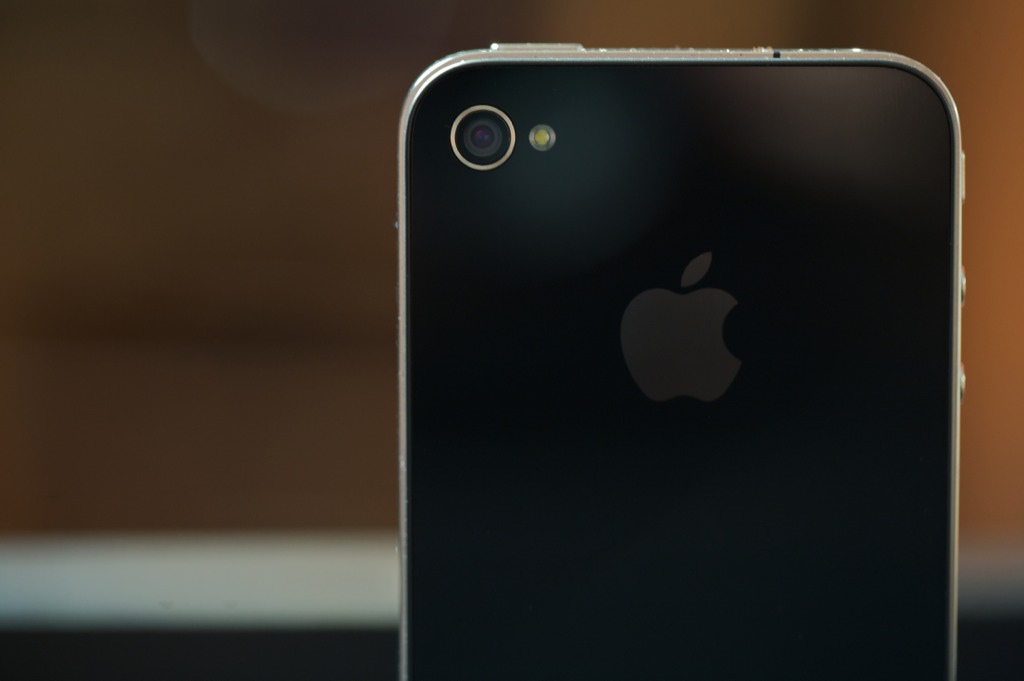


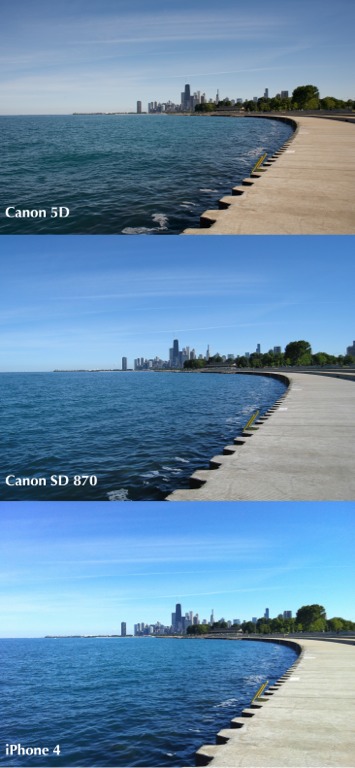
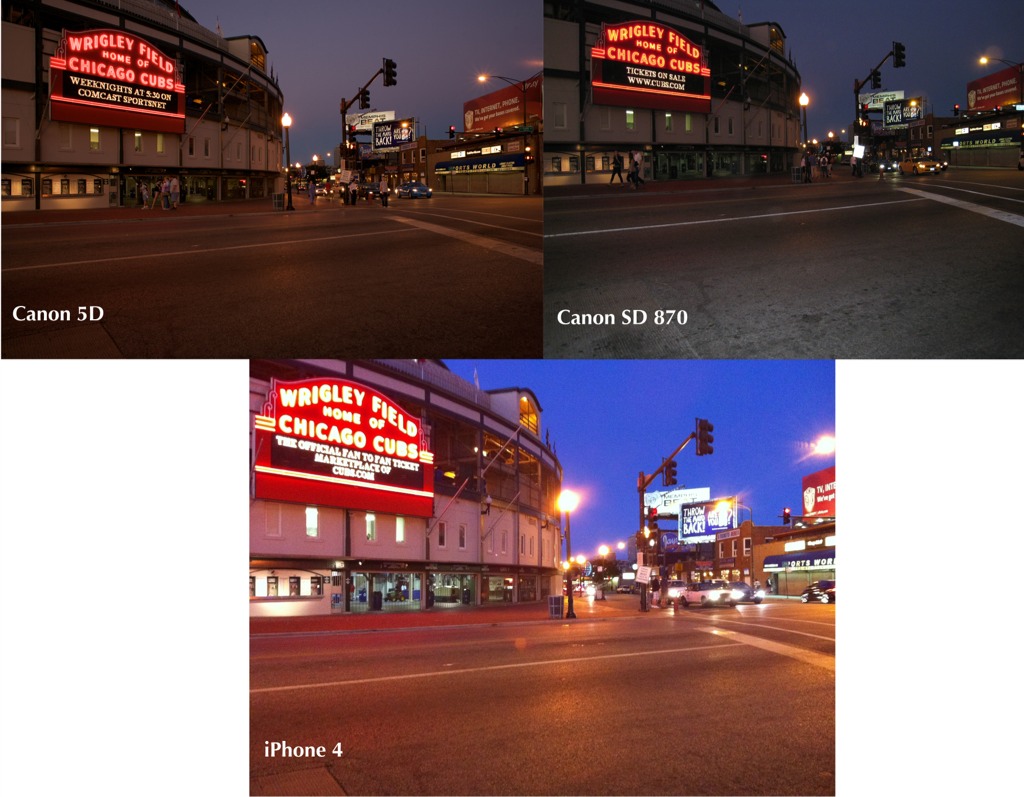
Be prepared for the Fandroids to start trolling. According to the Fandroid creed no one is allowed to write anything about the iPhone and Apple unless it is completly negative.
Excellent and well balanced review. Well done!
VERY WELL written, one of the best, most balanced reviews ever. Thanks!
for me the most natural way to hold my iPhone 3G while making a call is with the thumb and 2 fingers, thumb on left side, one finger on top, one on the right side. maybe a 3rd finger farther down on the right side.
for me trying to use the palm like pictured isn’t comfortable.
Flawed Masterpiece, is an oxymoron. Good review, I don’t have a problem with the way I hold the phone, doesn’t make any difference on my phone.
Thanks for the kind comments, folks.
BrianM-Making and receiving calls isn’t all we do with our iPhones. When I’m browsing the internet, or doing anything that doesn’t require an awful lot of typing, I’ll hold the phone as depicted in my left hand and use my right hand to peck at the screen. The issue extends to data as well, because when you lose reception, you lose your data connection.
Fandroid here…
I own a 3G and a 3GS and hate Apple’s controlling stance and their buggy firmware/software. Although they are slowly getting better and iOS4 with iTunes 9.2 has solved some bugs wrt handling of large libraries, but many bugs still remain.
And now that there are viable Android alternatives, I never plan on buying another iPhone due to their continued crAppie politics and the fact that you don’t actually own the phone you payed for but are instead borrowing it indefinitely from Apple.
But this was a good review with lots of useful information. And as soon as Apple quits fighting the jailbreak movement and pushing their DRM crap (and I do mean pushing in the sense of drugs to a junkie), I plan to reconsider my aforementioned decision.
On the whole a balanced article, and good to read people’s views on the iPhone 4.
But, one thing that constantly amazes me is how people are so impressed by FaceTime.
I don’t know what the situation is in the US, but here in the UK 3G phones have had face to face video calls since the very first phones came out almost a decade ago. No one uses it of course, but it’s as easy to access as it is the iPhone (Contact, option, make video call on a Sony Ericsson) and it works across multiple phone providers and models, over a normal cell connection.
And Facetime seems no easier then using Skype due to the constraint of WiFi only. With the small exception of not needed to pre register.
So to me, it seems not so much a glimpse into the future, but a look back at the past which people choose not to use, and by ignoring existing standards and creating new ones it doesn’t seem a very consumer friendly way of going forward with a technology.
Fandroid-I hear what you’re saying and I don’t entirely disagree. I think we must accept at this point that Apple’s greatest strength-its top down control of the user-experience-is also its greatest weakness. Before you make the jump, take a hard look at the things that do work for you on the iPhone and go into a store and see if you can duplicate them on Android.
Paul Freeman-Yeah I played with some of the earlier incarnations of video chatting on phones and I found the experience to be lacking. The ones I tried were coming across at 12 frames per second and were low resolution and just not an improvement over an ordinary cell call. Face Time to me is the future, because once truly high speed wireless networks are in place, Face Time, or a variation on it, will be how we make all of our calls. The video component isn’t even the big deal here. It’s the improvement in audio quality and the movement to a system where voice and data are no longer bifurcated in the artificial way that they are today. That’s the future of cellular communications that I was referring to.
This was one of the better reviews… maybe its because I agree with all you said? I appreciate after a week of us how in every way I can imagine it is a better phone than my 3GS. Well, except all that glass makes me nervous.
one of the most elaborate and well detailed iPhone4 reviews I have read.
Makes me wanna consider the Android!
When I read the author’s view on the apple’s on-screen keyboard, and the transition from physical to virtual, I couldnt help feel remiss that he talked about Google’s voice-input, but did not mention Swype, which is available for Android and Windows mobile. All I want is for Swype to add the little microphone in the corner, like the android keyboard and I’m all set.
Excellent review.
I’m currently considering the iPhone4 or the Blackberry Bold 9700. It’s a hard choice but I am leaning to the iPhone…